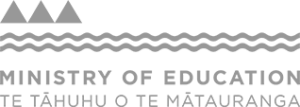CEO Update
Kia ora,
At the beginning of May I was appointed the CEO of Netsafe. It has been a rewarding few months and I would like to express my gratitude to everyone at Netsafe and the broader online safety community for making me feel very welcome.
One of the first things I wanted to review with the Board and others was the strategic priorities for the organisation. After meeting with our board and senior leadership team, we developed a new plan. I’m delighted to announce Netsafe’s refreshed purpose:
Supporting people in Aotearoa to create safe and positive online spaces.
Since my first day, I’ve met with a large number of stakeholders from across the online safety eco-system, to understand their expectations of Netsafe and how we can work together to keep people safe online. They include representatives from central and local government, civil society organisations, advocacy and harm prevention groups, tech companies and many others. It’s clear that we are united in our desire to create safer online spaces for all New Zealanders.
Together with Netsafe’s first cultural advisor, Amokura Panaho I’ve started building our cultural capability within Netsafe and started with targeted engagement approaches.
In my first 60 days at Netsafe, I’ve also taken time to consider the organisational structure, roles and resources we need to successfully deliver our purpose. Following an open consultation process with staff, I am excited to be able to share the new leadership team structure:
- Chief Online Safety Officer – existing team member Sean Lyons
- Chief Digital Harms Advisor– existing team member, Sarah White
- Chief Legal Advisor – we have made an appointment and look forward to sharing their details with you shortly
- Chief Customer Officer – we have made an appointment and look forward to sharing their details with you shortly
- Chief Operating Officer – existing team member, Andrea Leask
Ngā mihi,
Brent Carey
CEO, Netsafe
Report Contents
Previous quarterly reports
Quarterly Results
Between April and May 2022, Netsafe received 6,596 reports overall which is a 9.4% percent increase compared to the last quarter. Netsafe experienced a 9.6% percent increase in personal harm reports, a 6% percent decrease in scam reports and a 33.6 percent increase in other reports.
TOTAL REPORTS (+9.4%*)
PERSONAL HARM REPORTS (+9.6%*)
SCAM & FRAUD REPORTS (-6%*)
OTHER REPORTS (+33.6%*)
*percentage change based on reports made to Netsafe when compared to the last quarter
Reports by age group
2%
00-12
9.3%
13-17
6.3%
18-21
35.9%
22-40
29.4%
41-64
17.1%
65+
Reports by region
Reports by gender
55.6%
FEMALE
4%
GENDER DIVERSE
40.4%
MALE
Personal Harm Reporting
Between April and June 2022, Netsafe received 1,421 personal harm reports. The top personal harm categories under the Harmful Digital Communication Act for the quarter were:
Reported breaches under the Harmful Digital Communications Act*
Scam and Fraud Snapshot
Scams reported to Netsafe this quarter were dominated by phishing scams delivered by text message. May 2022 saw a large spike in reports of text messages impersonating well-known businesses operating in New Zealand. Majority targeted bank customers and instructed people to click on malicious links to ‘dispute’ fictitious payments and charges.
Anecdotally, our reports indicate that scams delivered by text message are becoming an increasingly favoured method of delivery. The two most frequently reported scams to Netsafe this quarter were received by text, with the second most reported type being ‘Flubot’ related scam messages.
Scams delivered by text message afford scammers the opportunity to deceive people as it can be harder to see the full website address you are being directed to, and the ‘short code’ they are received from can help to obscure where the message has come from.
Scam & fraud snapshot
$13,303,551M
REPORTED LOSSES
565
REPORTS WITH $ LOSSES
$23, 546
AVERAGE LOSS
Top scam categories reported
Education & Outreach Engagement Highlights
Education
With rangatahi spending more time online, Netsafe has seen an increase of requests from New Zealand. In early July we hosted a the first in-person live event since Covid in New Plymouth. There was a fantastic response from the sector and we have three more planned in 2022 – in Gisborne, Pakuranga, Rolleston Christchurch and Rotorua.
Netsafe’s Educator Framework, previously review tool, has been published. This powerful roadmap supports schools to develop a culture of online safety, digital citizenship and wellbeing across the environment. In addition, there was the refreshment of the incident guide, to ensure that schools and kura can support their ākonga when online harm occurs. Netsafe’s educational resources are also being refreshed and developed into a kete for the start of the 2023 school year.
Netsafety Week 2022
This quarter we planned for another Netsafety Week in July 2022. We put together various online and in-person events across the country. The week is designed to encourage online safety discussions in our diverse communities.
The Code of Practice for Online Safety and Harms
Digital platforms kept everyone connected during Covid, but unfortunately there was a spike of more than 25% of harmful content reports. There are too many Kiwis being bullied, harassed, and abused online, which is why the industry has rallied together to protect users.
In June we have continued to convene conversations around the Code with local and international tech companies, civil society organisations, government agencies and the broader online safety community.
The Code builds on solid online safety principles from New Zealand, Australia, and the EU, including bringing to New Zealand the same regime on mis and disinformation from other jurisdictions.43
Netsafe Team Spotlight
Shelley Hirst, Netsafe Education Advisor
Shelley’s passion to improve outcomes for rangatahi led to the social work profession where she has experience in crisis response, education, harm prevention and reduction.
She values the opportunity to support people to be safer by resourcing the systems and communities they are part of. Shelley feels fortunate to work closely with Netsafe’s Youth Action Squad, an amazing group of young leaders dedicated to supporting their peers to be safer online.
The main thing you need to know about Shelley is as a self-confessed mycophile, she is in fact a really fun person. In case you’re wondering, a mycophile is a person whose hobby is hunting and foraging for wild edible mushrooms.
About Netsafe
Netsafe is an independent non-profit organisation with an unrelenting focus on online safety. We keep people safe online by providing free support, advice and education. Visit netsafe.org.nz for useful resources or call 0508 638 723 seven days a week for help with an online incident.
Find out more at www.netsafe.org.nz
Become a Netsafe member
Netsafe is incorporated as a society and a charity. Our members represent a variety of backgrounds and countries, but all have one thing in common – an interest in keeping people safe online. Membership is free and easy to apply for.
Find out more about being a Netsafe member, or apply to join today by completing our online form.
Report Data
The data in this report represents the data available at the end of the quarter. Information related to the reports made to Netsafe reflect high-level trends and does not include easily identifiable information about specific reports/incidents.
If you have any queries about the information in this report, please email [email protected]




